All types of beets are herbaceous and dependable plants for spring or fall vegetable gardens. Most of these beet varieties are native to India, the Mediterranean areas, and the Atlantic coast of Europe.
My favorite kinds of beets are heirloom, hybrid, specialty, and miniature species. They come in different colors and are packed with numerous nutrients. In this guide, we are going to look at each type of beet.
Different Types of Beets with Pictures
Beets are available in different sizes, shapes, and colors. In this article, we’ll learn about the origin and identification features of each type of beet:
1. Forono Beets

It is a sweet beet species native to Italy and also called Cook Delight. These cylindrical beet varieties are easy to slice and grow up to 5-8 inches long.
We recommend tossing the slices into the salad or vegetable soup. Harvest this beet species while young rather than leaving it to grow too long.
2. Red Ace Beets
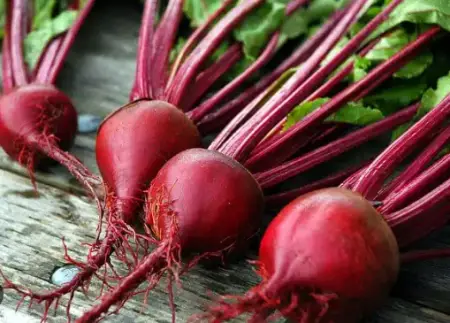
It is a hybrid beet variety that grows fast and adapts to different soil conditions. The beet can also tolerate cold climates than other species.
Red ace beets have smooth-skinned deep purple roots that show through the soil after attaining maturity. It takes 53 days to be ready due to its vigorous growth habit.
3. Sweetheart Beets
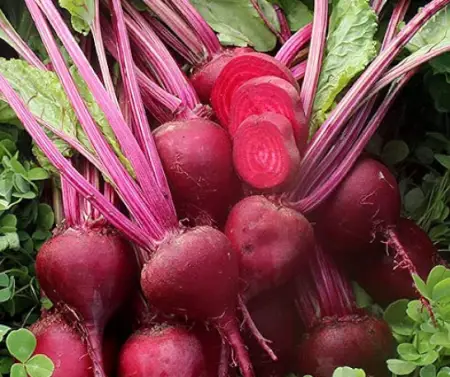
These beautiful beetroots have emerald-colored leaves that mark a bold statement in the vegetable gardens. The beets take 60 days to attain maturity and are 1.5 inches in width.
We recommend growing sweetheart beets in colder regions to help achieve extra-sweetness. Warm temperatures will make the beets woody and inedible.
4. Avalanche Beets
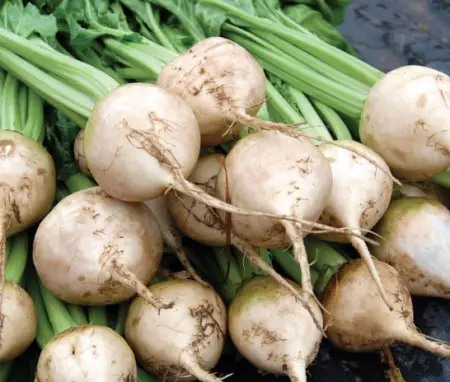
These are pure white beets with mild flavors and are ideal for chopping fresh in salads due to their unique crunchy texture. You can also roast or incorporate it into soups and stews.
The green parts of Avalanche beets have a dark green tone and reddish hint. The beet variety takes 60 days to mature and be harvested.
5. Early Wonder Tall Top Beets
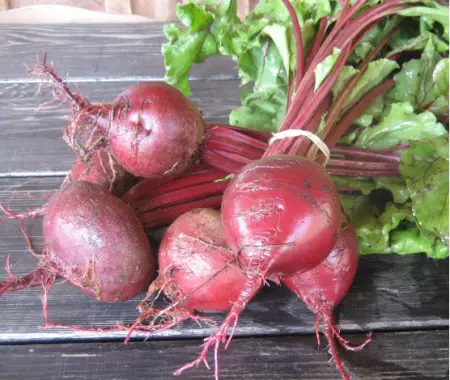
These are fast-growing kinds of beets since they take 50 days to mature. We recommend harvesting early wonder tall top beets about a week earlier than the stipulated date.
They have globular roots that are highly delicious and grow up to 4 inches in width. It is an excellent choice for adding to soups, salads, and stews.
6. Sugar Beets
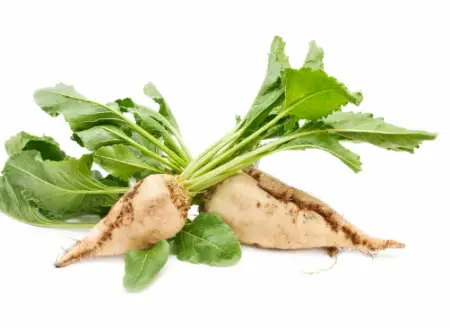
The beetroot species is an excellent choice for commercial purposes due to its fast-growing characteristics. The high sugar level has limited its consumption rate.
Sugar beets have conical root structures that resemble turnips and are off-white. Swiss chard or spinach is an excellent alternative to sugar beets since they have similar flavors.
These beet species are grown from seeds in a wide range of soil. I recommend soil textures ranging from heavy clay to sandy loam.
7. Sangria Beets

These are open-pollinated species that thrive in hot climates or regions that experience large temperature fluctuations. They are excellent choices for salads or side dishes.
They are bolt-tolerant and can be harvested within 55 days after planting. The beetroots have deep red color that never gets tough if left in the ground for a longer period.
8. Cylindra Beets
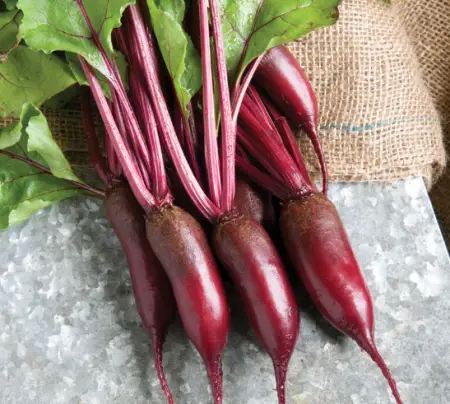
It is a hybrid species with a unique shape. The beet produces long, tapered, and cylindrical-shaped roots with average to moderate size.
The beetroot variety takes 60 days on average to be ready for harvesting. They are delicious for salads or pickling.
9. Crosby Egyptian Beets
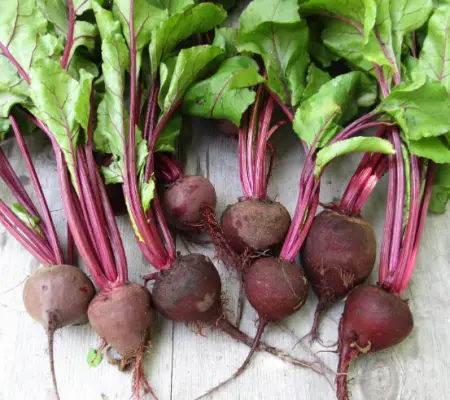
It is an heirloom cultivar native to Germany and was brought to the American market in the 1860s as Egyptian Beets. These red beets have flat appearances and are often produced.
The slightly sweet and earthy flavors make Crosby Egyptian beets delicious. Many food enthusiasts prefer using them in salads or sautéed as mature greens.
These fast-growing beet species take 55 days to mature and are cold-tolerant. They are an excellent choice for Northern gardeners looking for early fall vegetables.
10. Mangel-Wurzel Beets

These beet species are also called mangold beets since they were commonly grown as livestock fodders. The sugary taste is the reason behind its popularity in the kitchen.
The species is a cross between a beet and a carrot or turnip due to its shape. The common varieties of mangel-wurzel beets are mammoth red and yellow cylindrical beets.
11. Red Beets
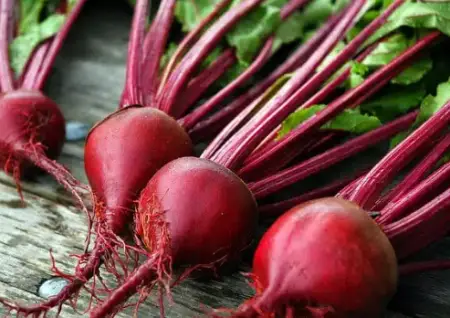
These are the most flavorful beets in the world. They are mainly grown for human consumption due to their anti-cancerous properties.
The red pigment from the beets contains flavonoids that help to inhibit and prevent cancerous tumors. The sweet taste makes the species excellent for salads.
12. Baby Beets
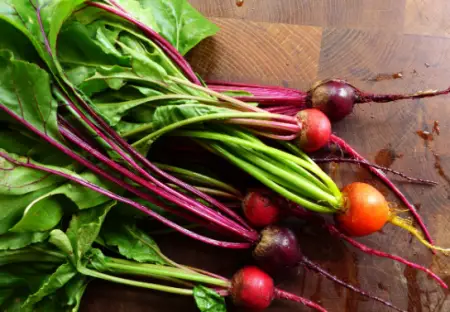
These are the real queen miniature beets that resemble Romeo carrot types. These species are usually plucked in the spring to allow the additional beets to develop.
Baby beets come in different colors with spherical shapes and short taproots. They are sold under specialty items by brilliant gardeners.
They are delicious since they can be cooked or steamed. The short taproots can be tossed into salads due to their clear texture.
13. Golden Beets
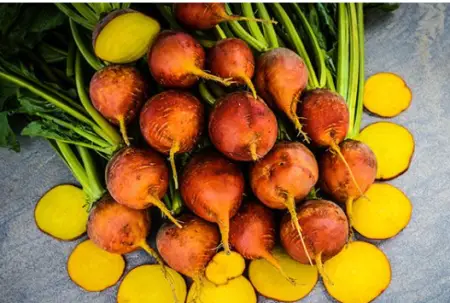
Golden beets are also called yellow beets. They have been around since the early 1820s with a light taste. The short roots are mellower with a less earthy taste.
Golden Detroit is an example of golden beet species that is harvested after 55 days. It can be consumed raw or in salads since it is delicious.
14. Striped Beets
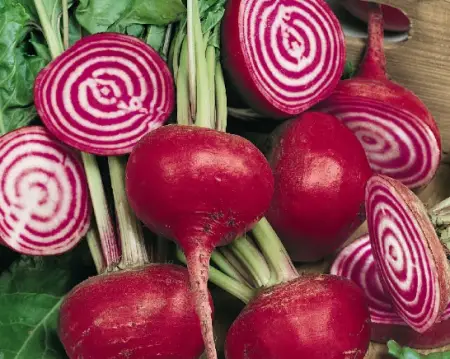
These beets are often called Bassano or Chioggia since they have natural stripes. The names come from a fishing village in Northern Italy since it is the first place to be grown.
They have concentric circles of pink and white when cut. These striped beets are delicious and have earthy flavors with a candy-cane-like appearance inside.
15. Bull’s Blood Beets
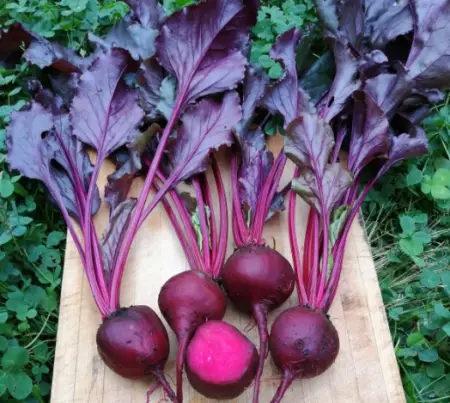
It is a heritage beet type created from French Crapaudine species. These heirloom cultivars’ burgundy-purple leaves are delicious.
These beets are harvested as microgreens or eaten raw when matured. The roots have sweet and earthy flavors when harvested while still young.
16. Boldor Beets
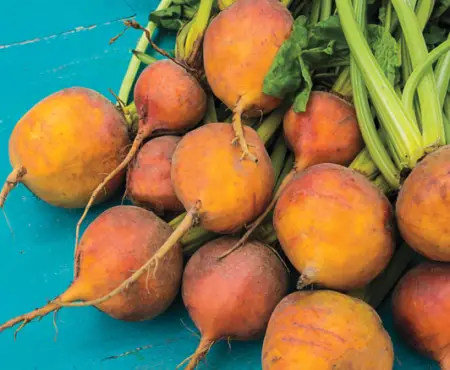
It is a fast-growing beet species that takes 50 days to be harvested. The boldor beets require full sun to foster the development of bright green leaves.
The green leaves are edible since they are tasty and nutritious. If grown in a container, they require a lot of room for better growth.
17. Chioggia Beets
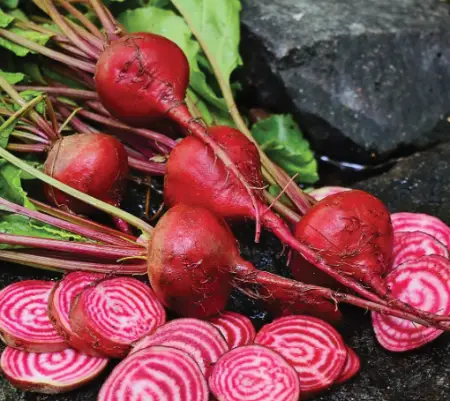
Chioggia beets, also known as candy cane beets or striped beets are a unique and visually striking variety of beetroot that originated in the coastal town of Chioggia, near Venice, Italy.
Chioggia beets have a flattened, round shape and thin skin that ranges in color from light red to deep pink. The interior of the beet is where they get their nickname, with their candy-striped flesh alternating between a deep magenta and white color.
Like other beet varieties, Chioggia beets have a slightly sweet and earthy flavor. However, some people find them to be milder and sweeter than other beet varieties.
Chioggia beets are packed with vitamins and minerals, including fiber, folate, potassium, vitamin C, and manganese. They are also low in calories, with one cup of cooked Chioggia beets containing only around 50 calories.
Chioggia beets can be used in a variety of culinary applications, including roasting, boiling, pickling, and even raw in salads. Because of their striking appearance, they are often used in decorative dishes and can be sliced thinly to create visually stunning beet chips.
18. White Albino Beets
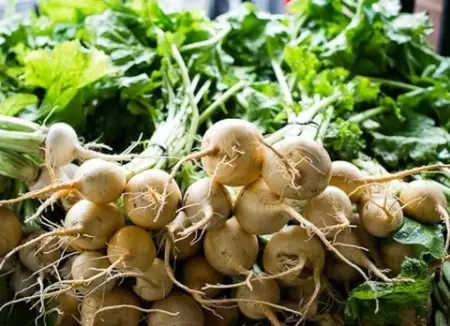
It is an annual vegetable with all-white roots and hails from Holland. The beetroot is sweet and round ideal for making sugar. The beetroot species takes 60 days to mature. They are suitable for growing in small gardens or limited space.
19. Common Garden Beets

These beetroots are also called table beets. These beet types are commonly grown around the world due to the availability of their seedlings.
They are classified into red, white, and purple colors. They are highly nutritious for pregnant women when eaten raw or cooked.
20. Detroit Dark Red Beets

It is a type of red beet with fast-growing characteristics. The deep-red roots are round with smooth skins.
Detroit dark red beets are ideal for canning, roasting, and slicing in salads since they are sweet, mild, and tender.
You can also use dark green leaves, bright red stems, and veins to add color to your salads. It is an heirloom beet variety native to North America.
21. Ruby Queen Beets
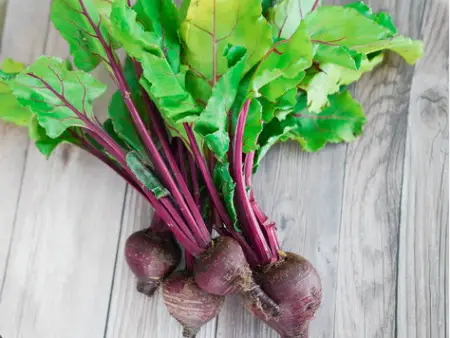
Ruby Queen beets are a popular variety of beetroot that are known for their deep, dark red color and sweet flavor.
Ruby Queen beets have a round or slightly oblong shape and smooth, dark red skin. The flesh of the beet is a vibrant, deep red color and is tender and sweet.
Ruby Queen beets have a sweet, earthy flavor with a mild, slightly nutty taste. They are often described as being less bitter than other beet varieties.
Ruby Queen beets are rich in vitamins and minerals, including fiber, potassium, vitamin C, and folate. They are also low in calories, with one cup of cooked beets containing only around 60 calories.
Ruby Queen beets can be used in a variety of culinary applications, including roasting, boiling, pickling, and even raw in salads. They are often used in recipes for borscht, a traditional Eastern European soup made with beets.
22. Moulin Rouge Beets
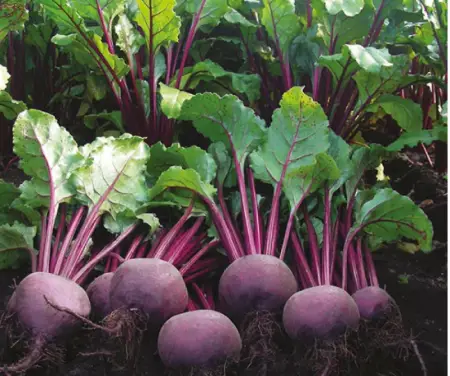
Moulin Rouge beets are a unique and visually striking variety of beetroot that are known for their deep, rich purple color.
Moulin Rouge beets have a round or slightly oblong shape and deep, dark purple skin. The flesh of the beet is a vibrant, dark purple color and is tender and sweet.
Moulin Rouge beets have a sweet, earthy flavor with a slightly nutty taste. They are often described as being less bitter than other beet varieties.
These beets are rich in vitamins and minerals, including fiber, potassium, vitamin C, and folate. They are also low in calories, with one cup of cooked beets containing only around 60 calories.
They can be used in a variety of culinary applications, including roasting, boiling, pickling, and even raw in salads. Their striking color makes them a popular ingredient in decorative dishes, and they can be sliced thinly to create visually stunning beet chips.
23. Touchstone Gold Beets
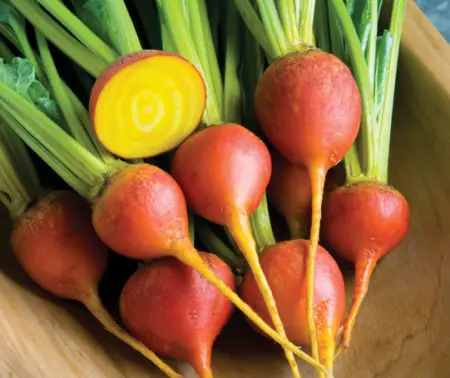
Touchstone Gold beets are a popular and unique variety of beetroot that are known for their bright, golden color and sweet flavor. They have a round or slightly oblong shape and bright, golden-yellow skin. The flesh of the beet is a vibrant, golden-yellow color and is tender and sweet.
They have a sweet, earthy flavor with a slightly nutty taste. They are often described as being less bitter than other beet varieties.
Touchstone Gold beets are rich in vitamins and minerals, including fiber, potassium, vitamin C, and folate. They are also low in calories, with one cup of cooked beets containing only around 60 calories.
These beets can be used in a variety of culinary applications, including roasting, boiling, pickling, and even raw in salads. Their bright color makes them a popular ingredient in decorative dishes, and they can be sliced thinly to create visually stunning beet chips.
24. Mammoth Red Mangel Beets
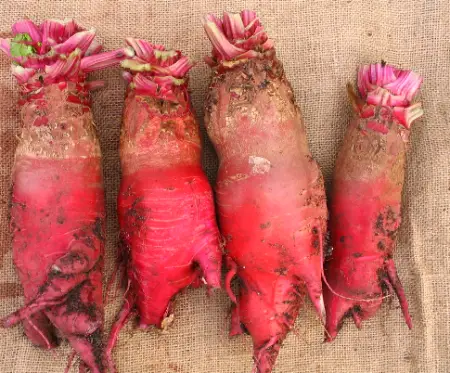
Mammoth Red Mangel beets are a unique and large variety of beetroot that is often grown as livestock feed but are also enjoyed by humans for their sweet taste and unique appearance.
They are versatile in the kitchen and can be used in a wide variety of recipes, from sweet to savory dishes. Their nutritional benefits make them a healthy addition to any diet.
25. Giant Yellow Eckendorf Beets
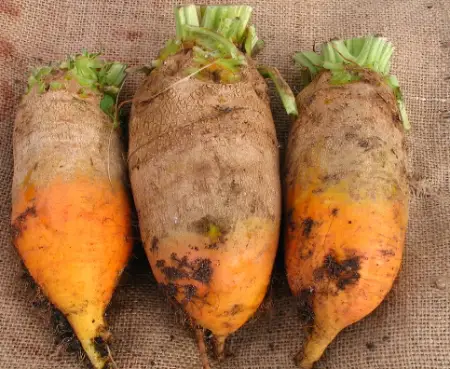
Giant Yellow Eckendorf beets are a unique and visually stunning variety of beetroot that are prized for their large size and sweet, mild flavor. They are versatile in the kitchen and can be used in a wide variety of recipes, from soups and stews to salads and side dishes.
Their nutritional benefits make them a healthy addition to any diet, and their rarity adds to their appeal for food enthusiasts.
My Final Thoughts
Beets are versatile and nutritious root vegetables that come in a variety of shapes, sizes, and colors. Some of the most popular beet varieties include red beets, golden beets, Chioggia beets, and white beets.
Each beet variety has its own distinct flavor and appearance, making them a popular ingredient in a wide range of culinary applications. Beets are also rich in vitamins and minerals, making them a healthy addition to any diet.
People Who Read This Also Read:






